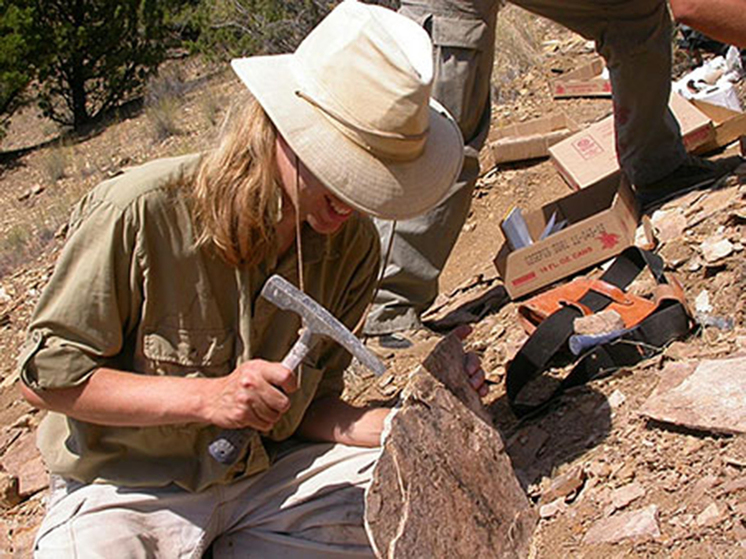Palaeontologists have to learn more about the lifestyle of the prehistoric underground inhabitant
When a person imagines dinosaurs, he thinks of huge, menacing beasts, but not all lizards meet these requirements, as evidenced one recently discovered small semi-subterranean species. Fona herzogae, as the new species was named, lived 99 million years ago in what is now Utah and spent at least some of its time digging burrows underground.

Fon's dinosaur fossil, discovered in Cedar Mountain, has some unusual features and was incredibly well preserved, leading paleontologists to believe something strange was going on.
“The dinosaur is often found intact, with many of its bones preserved in the original position when the dinosaur died, lying chest down with its forelimbs splayed, and found in exceptionally good condition,” — said paleontologist Haviva Avraami.
In addition to its unexpected preservation, Fona was well adapted to life underwater. He was small in stature and about the size of a dog with a simple build, he had large biceps, fused bones along the pelvis and hind limbs that were proportionately larger than the front ones – These are all traits they share with animals known for their burrowing skills.
Researchers say this indicates the little dinosaur was semi-ossorial, meaning it burrowed part of the time.
“Fon skeletons are much more common in this area than we would expect for small animals with fragile bones,— explained study author Lindsay Zanno. — The best explanation for why we find so many of them, and why we find them in small groups of several individuals, is that they lived underground at least part of the time. Essentially, the dinosaur did the hard work for us, burying itself throughout this entire area.»
While the tunnels and chambers of this burrowing dinosaur have yet to be discovered, paleontologists have previously found similar structures of its closest relative Oryctodromeus in Idaho and Montana. Both species of lizards have a number of common anatomical features, which once again indicates that they led a semi-fossorial lifestyle
As for what Fon looked like, Avrahami believes he was «most likely covered in a fluffy covering of colorful feathers.»
As well as expanding knowledge about subterranean dinosaurs and dinosaur diversity in general, this discovery sheds light on life in the mid-Cretaceous period — both on the surface and underground.
«The background gives us an idea of the third dimension that an animal can occupy when moving underground. This adds to the richness of the fossil record and expands the known diversity of small herbivores that remain poorly understood despite being incredibly important components of Cretaceous ecosystems,” — explains Avrahami.
According to paleontologists, people tend to have a “myopic view of dinosaurs that does not correspond to scientific evidence.” Experts now know that dinosaurs ranged from tiny, nocturnal hunters to sloth-like herbivores and even subterranean dwellers.
























































Свежие комментарии